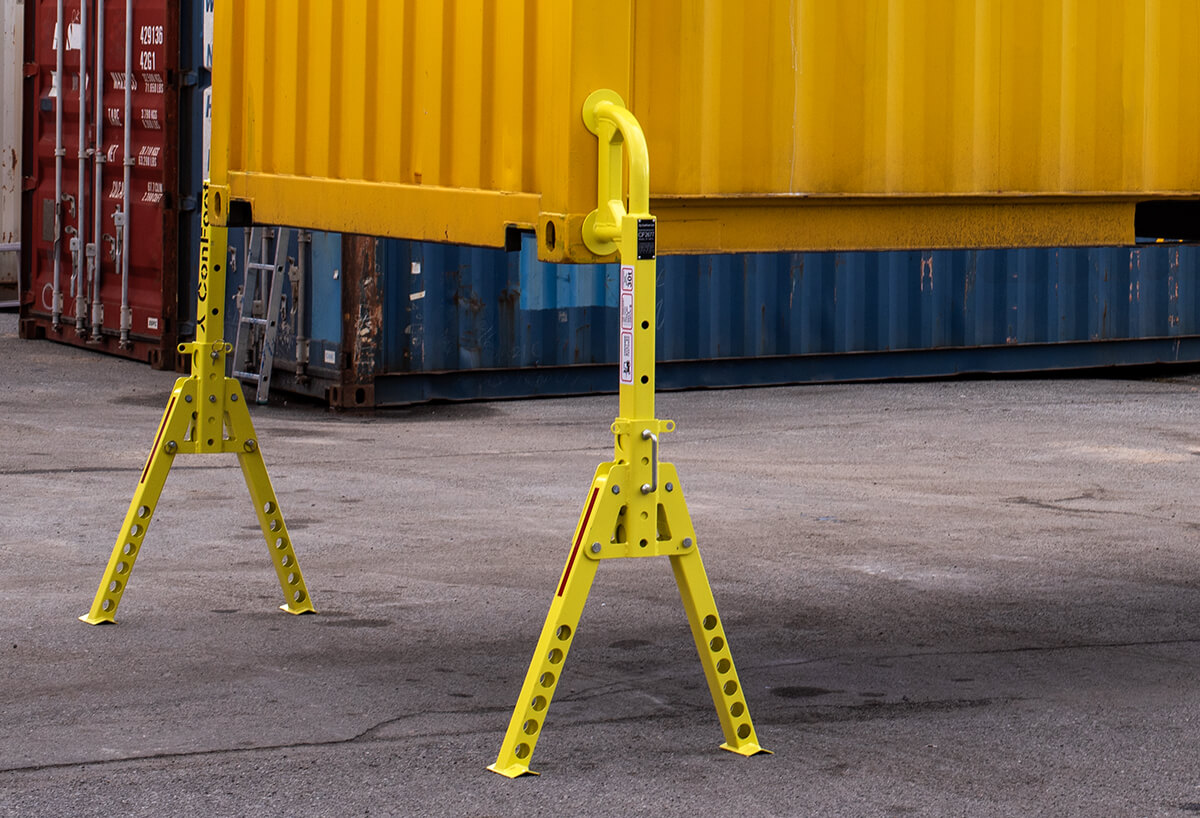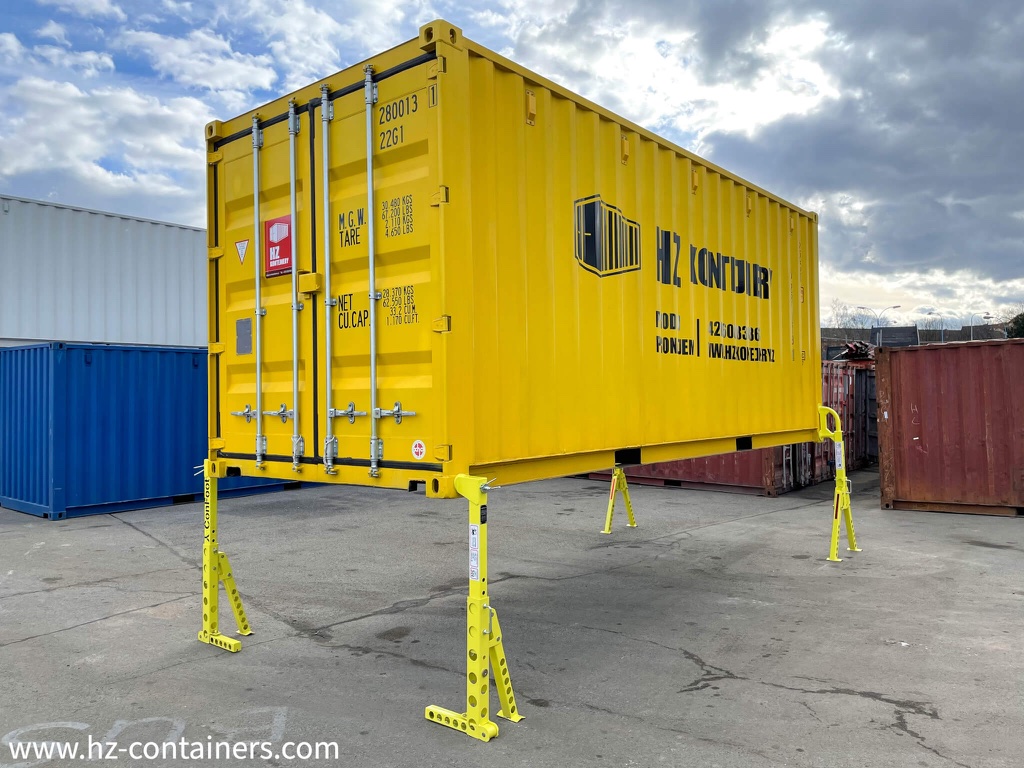The analysis of ConFoot container legs in relation to their usability, weight, and compliance with the EU’s statutory maximum weight limit of 23 kg (approximately 50 lbs) for manual handling is crucial for understanding their practicality and advantages.
Usability of ConFoot Container Legs for Drivers
ConFoot container legs are designed to improve the efficiency of container handling while ensuring safety and ease of use. One of the key considerations in their design is their weight. The ConFoot legs weigh approximately 24 kg each (roughly 53 lbs each), which is slightly above the EU statutory maximum limit of 23 kg for items that may be lifted manually, as outlined in the European Parliament document (E-7096/2008).
Weight and Handling Challenges
The weight of the ConFoot legs, while necessary to ensure their structural integrity and ability to support the immense load of fully loaded containers (up to 30 tons), poses a challenge for manual handling—especially for individuals with lower upper-body strength, such as many women or less physically robust workers. According to the EU directive, manually handling loads that exceed 23 kg can result in an increased risk of musculoskeletal injuries.
To mitigate these challenges, ConFoot has implemented several ergonomic features:
- Foldable and Portable Design: The legs are compact and foldable, making them easier to store and transport.
- Use of Lightweight Materials: Despite their strength, ConFoot legs are made from advanced lightweight materials to keep their weight as low as possible without compromising functionality.
- Ergonomic Grips: The design includes ergonomic grips to facilitate easier lifting and positioning.
Advantages of ConFoot Legs in Transportation
- Efficiency: By enabling swift container handling without the need for heavy machinery, ConFoot legs save time and reduce operational costs.
- Safety: The legs are engineered to provide stability during container loading and unloading, minimizing the risk of accidents.
- Sustainability: The lightweight design contributes to reduced fuel consumption during transport, aligning with global sustainability goals.
Potential Improvements
Given the EU’s 23 kg weight limit for manual handling, ConFoot could explore further weight reduction through the use of next-generation lightweight materials, such as advanced composites or alloys, without compromising the load-bearing capacity. Additionally, offering supplementary tools—such as small trolleys or lifting aids—could help make handling easier and more compliant with statutory limits.
Conclusion
While ConFoot container legs are at the forefront of innovation in container handling, their weight slightly exceeds the EU statutory limit for manual lifting, which may pose challenges for some operators. However, their design includes features that enhance both usability and safety, making them a valuable tool in the transportation industry. For businesses looking to improve efficiency and safety in container logistics, ConFoot legs remain a leading choice.
If you’re interested in learning more about ConFoot container legs or would like a personalized offer, please contact us. Our team will be happy to assist you in finding the best solution for your needs.




